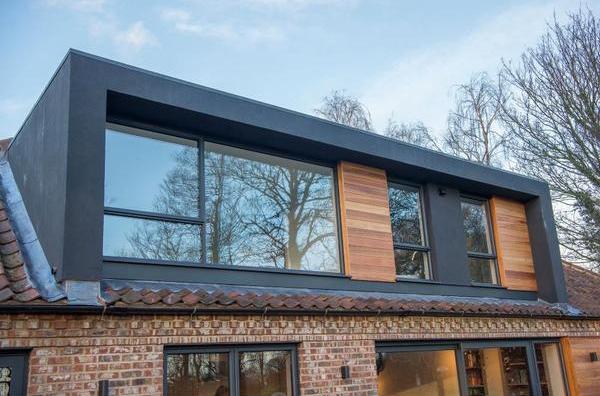Transforming your dusty loft into a bright and airy living space can be an excellent way to add value and extra square footage to your property. However, before wielding the hammer or calling in the builders, taking the time to navigate the legal aspects of loft conversions is crucial. This guide delves into the world of planning permission, building regulations, and neighbourly considerations, ensuring your project runs smoothly and complies with UK laws.
Can I convert my loft without planning permission?

This is a common yet tricky question. The good news is that many loft conversions fall under Permitted Development (PD) rights, meaning you can bypass the formal planning application process. However, there are specific limitations and conditions you must adhere to:
- Volume allowance: The additional habitable space created cannot exceed 40 cubic metres for terraced houses and 50 cubic metres for detached and semi-detached houses. Remember, this includes any previous extensions to the loft space.
- Roof line: The overall height of the loft conversion must not extend beyond the existing roof slope at the front of your house (the principal elevation).
- Dormer loft conversions: Dormers, the box-like structures with windows that protrude from the roof, are generally permitted under PD. However, their height and positioning are crucial. They must be set back at least 20cm from the eaves and not exceed the highest part of the existing roof.
- Designated land: If your property is located in a conservation area, an Area of Outstanding Natural Beauty (AONB), or a World Heritage Site, permitted development rights might be restricted. It's best to check with your local planning authority (LPA) for specific guidelines.
Understanding loft conversion permits vs planning permission
While both terms relate to building regulations, there's a crucial distinction:
- Planning permission is obtained from your LPA and governs the overall design and impact of your loft conversion on the surrounding area. It considers factors like overlooking neighbouring properties, street scene, and potential loss of light.
- Building regulations, on the other hand, ensure your conversion meets minimum safety and structural standards. These include fire safety, insulation, ventilation, and stability.
The path to planning permission (if required for your loft conversion)
If your loft conversion doesn't meet the permitted development criteria, don’t worry. You can still apply for planning permission. Here's a breakdown of the process:
- Pre-application advice: This is an optional but highly recommended step. Discuss your plans with your LPA's planning officer to receive valuable feedback and identify any potential concerns before submitting a formal application.
- Formal application: This involves submitting detailed plans of your loft conversion, including drawings, materials to be used, and a written explanation of the project. You'll also need to pay an application fee.
- Public consultation: The LPA will notify your neighbours and give them the opportunity to comment on your proposal.
- Decision: The LPA will assess your application against local planning policies and make a decision within a set timeframe.
Building Regulations approval for loft conversions
Even if you don’t need planning permission, Building Regulations approval may still be essential. This ensures your conversion meets safety and structural standards. Here's what you need to do:
- Building Notice: This is the most common route for loft conversions under PD. You notify your LPA about the work you intend to carry out. A building inspector will then visit the site at key stages of the project to ensure compliance.
- Full plans approval: This involves submitting detailed plans to your LPA for approval before construction commences. This is often used for more complex projects or when seeking retrospective approval for unauthorised works.
In England and Wales, you need not obtain Building Regulations approval if you can demonstrate that you are using someone registered with a competent person scheme. There is seperate guidance for Scotland and Northern Ireland.
Informing your neighbours about your loft conversion
While not a legal requirement, keeping your neighbours informed about your loft conversion fosters goodwill and avoids potential disputes. Here are some tips:
- Informal communication: Have a friendly chat with your neighbours to explain your plans and address any initial concerns they might have.
- Party Wall Agreements: If your loft conversion involves any shared walls or structures with neighbouring properties, you might need a Party Wall Agreement. This clarifies responsibilities and protects both parties during construction.

Additional considerations when undertaking a loft conversion:
- Do you need to contact a structural engineer? For complex loft conversions, involving significant changes to the roof structure, consulting a structural engineer is advisable.
- Building contractors: Employ qualified and reputable builders experienced in loft conversions who are members of the FMB.
- Building warranties: Consider getting a warranty on the work done, providing peace of mind in case of any issues after construction is completed. Speak to your builder about getting an Building Work Guarantee (BWG) for the works completed as part of your loft conversion.

Conclusion
By understanding the legal intricacies of loft conversions, you can navigate the process with confidence and ensure your project is a success. Remember, even the most straightforward loft conversion might require building regulations approval. Consulting with a qualified architect or building surveyor can help you determine the specific route you need to take, saving you time and potential headaches.
Key considerations when planning loft conversions
- Permitted development rights allow many loft conversions to bypass planning permission, but limitations and conditions apply.
- Building regulations approval ensures the safety and structural integrity of your loft conversion project.
- Planning permission might be required for loft conversions that exceed PD limits or are located in designated areas.
- Keeping your neighbours informed fosters positive relationships and avoids potential disputes.
- Seek professional guidance from architects, structural engineers, and qualified builders for a smooth and successful conversion.
Taking the next step
Before embarking on your loft conversion journey, we highly recommended that you:
- Contact your local planning authority (LPA): Discuss your plans with them to understand if you need planning permission and any specific local guidelines to consider.
- Speak to a qualified architect or building surveyor: They can assess your property, advise on the best approach for your loft conversion, and guide you through the legal requirements.
- Work with a reliable builder: Find certified Master Builders in your area with proven experience in delivering loft conversion projects. Home improvement projects represent a significant investment in your home and therefore you should take the time to find a contractor you are comfortable working with.
More loft conversion guidance
For more guidance aimed at helping you keep your loft conversion project on track, check out our dedicated Ultimate Guide to Loft Conversions.

